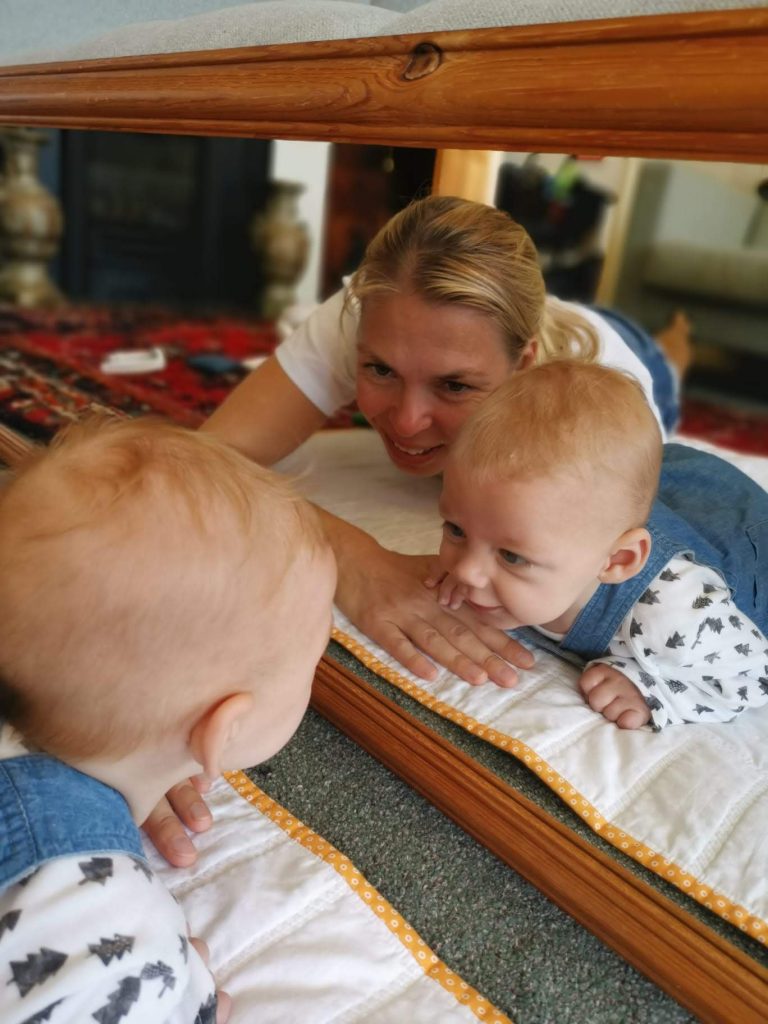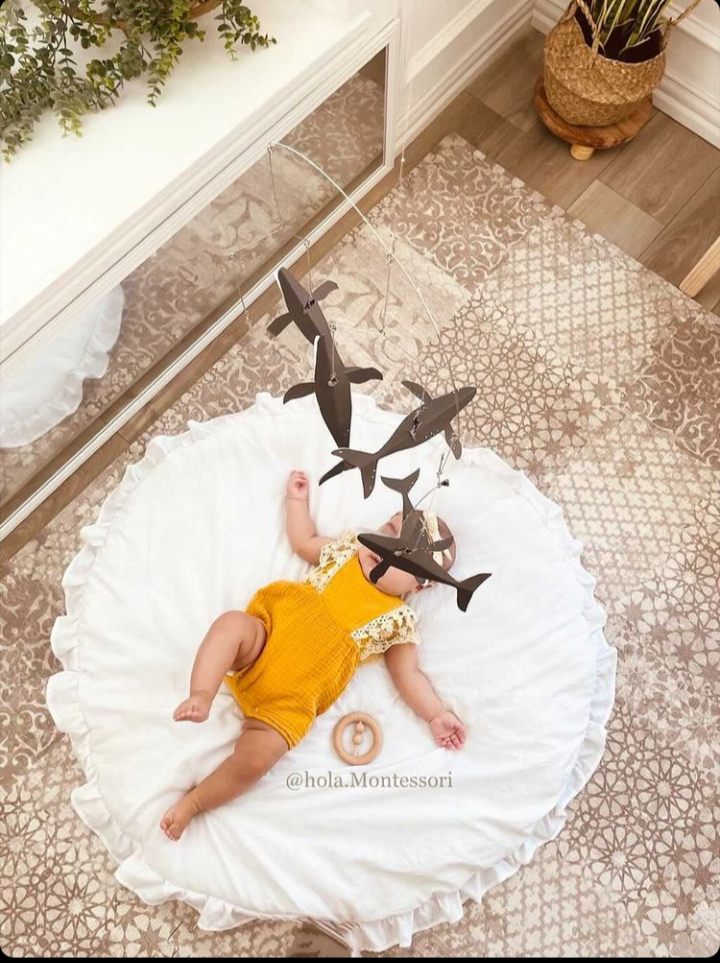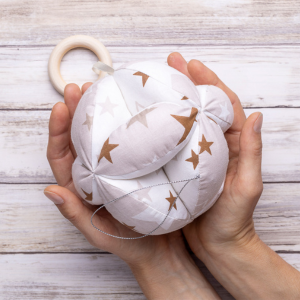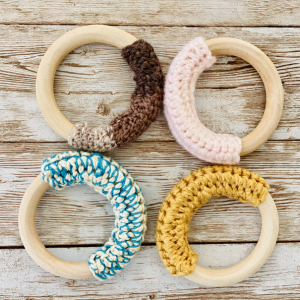Have you ever wondered if the toys your baby plays with are truly helping them learn and grow? With so many flashy, high-tech options out there, it can be tough to know what’s best. That’s where the Montessori approach comes in, offering a simple and natural alternative. Instead of loud, overstimulating toys, Montessori toys are designed to engage your baby’s senses in a calm, meaningful way, using natural materials like wood and fabric. What makes Montessori toys special is their ability to foster independence from an early age. They allow babies to explore at their own pace, building confidence and problem-solving skills through hands-on play. In this blog, we’ll explore some Montessori-inspired alternatives to popular baby toys that focus on open-ended play and sensory development. If you’re looking for toys that encourage learning while keeping things simple, Montessori alternatives could be the perfect choice.
Understanding Montessori Toy Principles
Montessori toys are designed with simplicity and purpose in mind. They steering clear of overstimulation and instead encouraging a child’s natural creativity. Unlike many mainstream toys, which are often made from plastic and loaded with lights and sounds, Montessori toys are crafted from natural materials. These can be wood, fabric, and metal, offering a richer sensory experience. What’s more, each toy is thoughtfully selected to match a child’s developmental stage. Therefore, helping them build problem-solving skills and fine motor abilities at the right time. With a focus on quality over quantity, Montessori toys create a calm, engaging environment. This truly supports a child’s growth and curiosity.
Popular Toys and their Montessori Alternatives
Popular Toy: Sensory Baby Gym – Montessori alternative: Montessori Baby Space
The electronic light-up baby gym is a popular choice for many parents, but it often tries to do too much. With flashing lights and loud sounds, it can be overstimulating. Also, they introduce concepts that aren’t appropriate for a baby’s age. Instead, the Montessori approach offers a much calmer alternative. A simple setup with a movement mat and a wall mirror allows babies to explore at their own pace, encouraging natural movement and self-awareness. This kind of environment supports healthy development without overwhelming the senses. It creates a space that’s both realistic and beneficial for your baby’s growth.

Popular Toy: small baby mirror – Montessori alternative: Wall mirror
Many small baby mirrors come with bright colors around them or they are attached to Sensory Activity Gyms (above) meant to catch a baby’s eye. However, they often end up being more distracting than helpful. A Montessori wall mirror, on the other hand, offers a more intentional experience. Mounted at the baby’s level, it lets them observe their own movements, helping to build self-awareness and encourage exploration. Unlike the smaller, busier mirrors, the simplicity of a Montessori wall mirror allows babies to focus on their reflections without unnecessary distractions, promoting natural curiosity and deeper concentration.

Popular toy: baby mobiles – Montessori alternative: Montessori baby mobiles
Commercial baby mobiles often have bright colors, flashing lights, and licensed characters. They purpose is more to entertain than to truly benefit a baby’s development. Many are made from synthetic materials and can be overstimulating or not age-appropriate. In contrast, Montessori baby mobiles are carefully crafted from natural materials and are fully tailored to a baby’s developmental stage, from the very first days. These mobiles encourage focus, visual tracking, and independent exploration. What’s more, Montessori mobiles can be handmade. This way, parents to save money while creating a beautiful, thoughtful toy that aligns with their baby’s natural learning process.

Popular Toy: baby rattles – Montessori alternative: Bell Rattle
The desing of plastic baby rattles are often focus on bright colors, flashing lights, and various sounds, all bundled together in one toy. While they aim to entertain, they can end up overstimulating, trying to teach too many things at once. In contrast, a Montessori bell rattle offers a simpler, more focused experience. Made from natural materials, this rattle lets babies explore cause and effect in a way that’s easy to understand. When they shake it, they quickly grasp that the sound comes from the shiny bell inside, making it an engaging yet calming toy that encourages natural learning without overwhelming them.

Popular Toy: plastic sensory balls – Montessori-friendly alternative: Puzzle Ball
Plastic sensory balls are typically come with bright colors and various textures, aiming to stimulate multiple senses at once. While they’re fun to look at and touch, they can sometimes be overwhelming for a baby who’s still developing basic motor and sensory skills. The Montessori Puzzle Ball, on the other hand, provides a more purposeful and focused experience. Made from soft, natural materials, its design aim to fit comfortably in little hands. It also encourages babies to practice grasping and manipulating objects. Its unique shape allows babies to explore movement and coordination gradually, supporting natural skill development without unnecessary distractions.

Popular Toy: plastic teethers – Montessori-friendly alternative: crochet, wooden teether ring
Again, plastic teethers often have bright colours and come in various shapes. These work well to catch a baby’s attention but sometimes overwhelming with unnecessary visual stimulation. In contrast, wooden and crochet teether rings offer a more soothing, natural option. Made from raw wood and soft crochet cotton, these teethers are gentle on a baby’s gums and provide a satisfying texture to chew on. The natural materials not only make them safe and non-toxic but also encourage babies to explore texture and touch in a calm, focused way. This simple design aligns perfectly with Montessori principles, supporting sensory development without overstimulation.

Beneftis of Montessori baby materials over popular toys
Montessori toys offer several key advantages over many popular toys.
- Promotes Independence and Problem-Solving: Montessori toys encourage children to explore and experiment on their own, helping them build confidence and problem-solving skills through hands-on play.
- Supports Sensory Development: Made from natural, non-toxic materials, these toys provide interesting textures and shapes that stimulate a baby’s senses without overwhelming them.
- Encourages Longer Engagement: The open-ended design of Montessori toys invites children to play in various ways, leading to longer periods of focused, independent play.
- Safety and Durability: With their sturdy, natural construction, Montessori toys are built to last, offering a safe and mindful play experience for little ones.
How to Transition to Montessori Alternatives
Transitioning to Montessori-inspired toys can be a rewarding process for both parents and children. Start by introducing Montessori toys gradually, focusing on simplicity. Begin by removing overstimulating toys from your child’s environment to create a calmer space for exploration. Next, consider organizing a Montessori-friendly play area that promotes independence. Arrange toys neatly and accessibly, allowing your child to choose what they want to play with and encouraging them to take charge of their playtime.
If you’re concerned about costs, there are plenty of budget-friendly Montessori options available. Look for affordable toys at local thrift stores, consider DIY projects to create simple, engaging toys, or explore online marketplaces for secondhand options.
With these steps, you can create a nurturing environment that supports your child’s natural learning and development while making the transition to Montessori toys both manageable and enjoyable.
Final thoughts
To wrap things up, choosing Montessori alternatives to plastic toys is really important for supporting your child’s development and sparking their natural curiosity. These toys are designed with intention, helping children build independence, explore their senses, and engage in meaningful play. By creating a calm environment, you allow them to learn at their own pace, which is so beneficial. As you transition to these toys, keep in mind the value of selecting mindful and purposeful options that fit your child’s needs. By opting for Montessori alternatives, you’re not just providing toys; you’re creating a nurturing space that encourages your little one to learn and explore the world around them. Enjoy this journey, and watch as your child flourishes through their play and discoveries!
Read more about the Montessori baby play and the Montessori Baby Routine.
